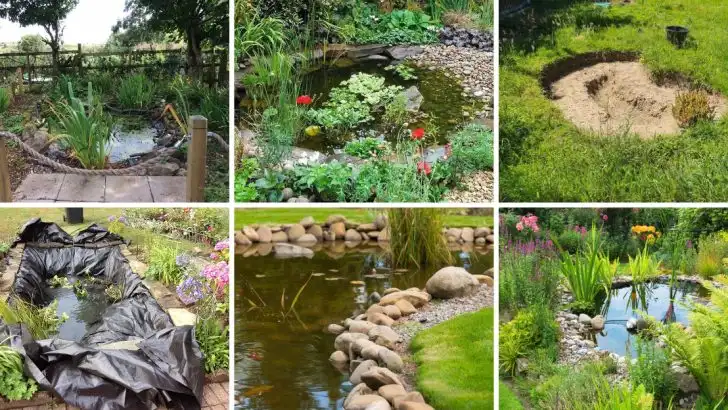I used to think ponds were only for big gardens or people with loads of space and time. Then a neighbor showed me the small wildlife pond tucked into the corner of their allotment, and it completely changed my idea of what’s possible. It was full of life—frogs, dragonflies, birds stopping by for a drink—and it didn’t take up much room at all.
Creating one doesn’t need to be complicated or expensive. A few smart choices in the beginning can make all the difference in attracting wildlife and keeping the pond healthy. Over time, it kind of takes on a life of its own. If you’ve been toying with the idea of adding a pond to your garden or allotment, these 15 tips can help you get started without overthinking it.
Choose the Right Location
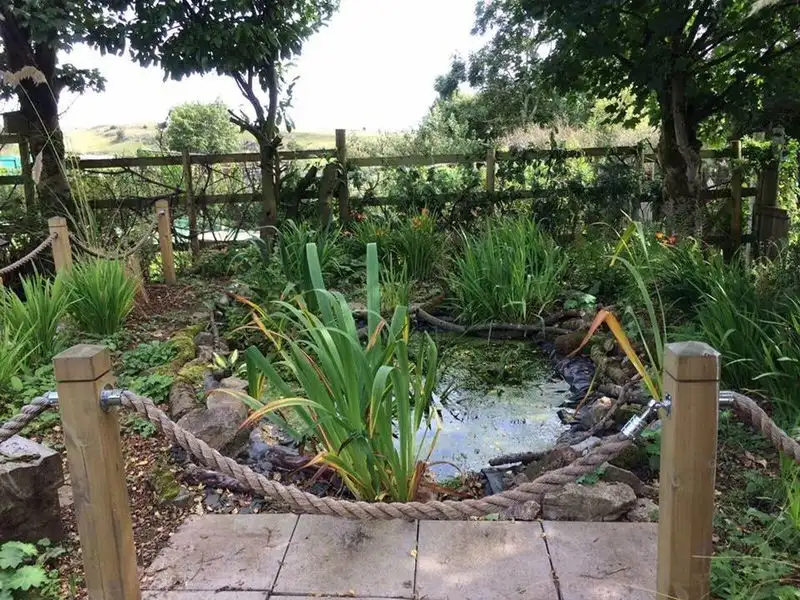
Placing your pond in the right spot is crucial for its success. Preferably, choose a location that receives sunlight for part of the day but also offers some shade. The balance between light and shade supports diverse plant and animal life. Avoid areas under large trees to minimize debris and maintenance. Consider the proximity to a water source for easy filling and maintenance. Lastly, observe water drainage in your garden to prevent flooding. By thoughtfully selecting the location, you ensure a thriving pond ecosystem.
Decide on Pond Size
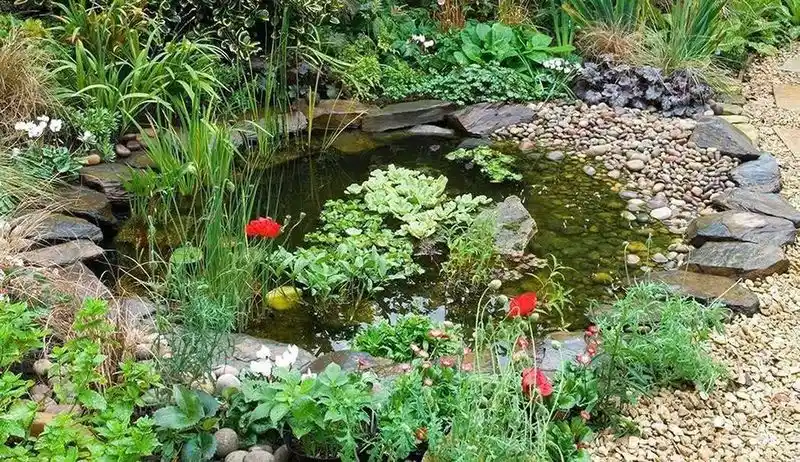
Determining the size of your pond depends on available space and the wildlife you wish to attract. A larger pond can support more species, from frogs to dragonflies. However, even a small pond can become a microhabitat. Sketch out potential sizes in your garden to visualize the impact. Ensure the pond’s scale complements your garden’s layout. Remember, a deep pond retains water temperature better, which benefits amphibian life. Choosing the right size is all about balancing your garden’s aesthetics with ecological functionality.
Dig the Pond
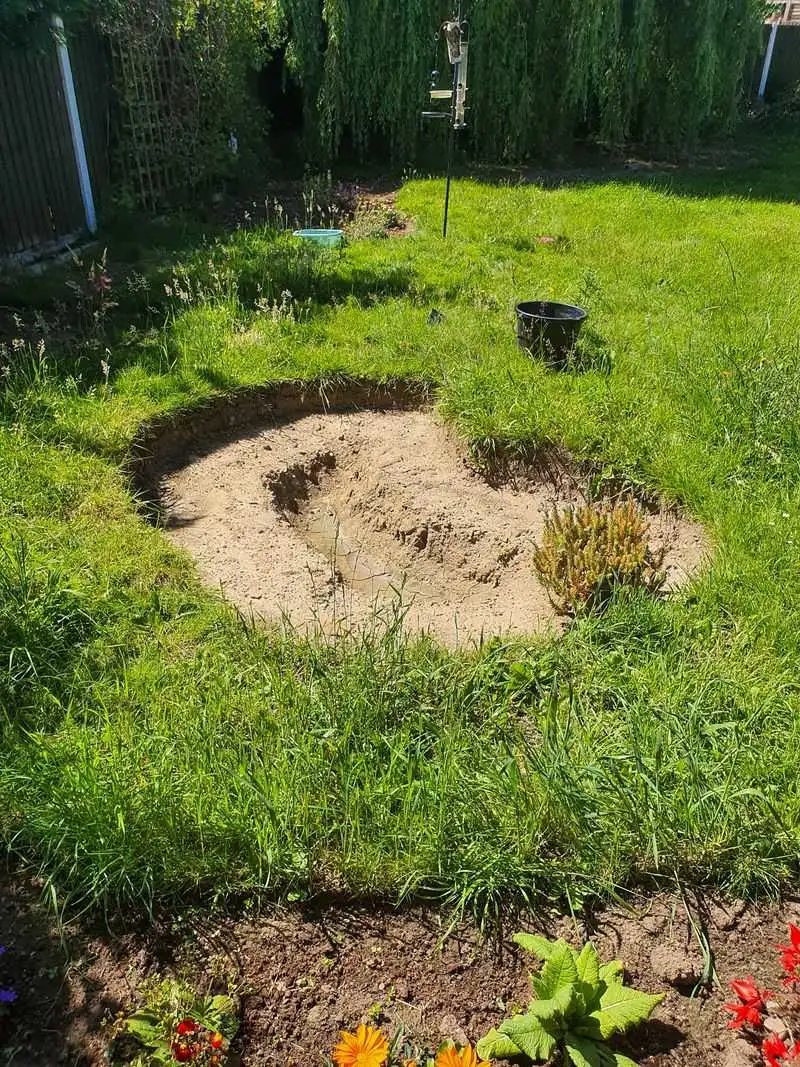
Digging the pond is where the vision becomes reality. Begin by marking the outline of your pond with a rope or hose. Start digging from the center, gradually creating shelves that mimic natural water bodies. These shelves provide varied depths for different species. Use the excavated soil to create mounds or add elevation to your garden. While digging, ensure the pond has gentle slopes to allow easy access for wildlife. Remember, this physical labor paves the way for a thriving aquatic haven.
Install a Pond Liner
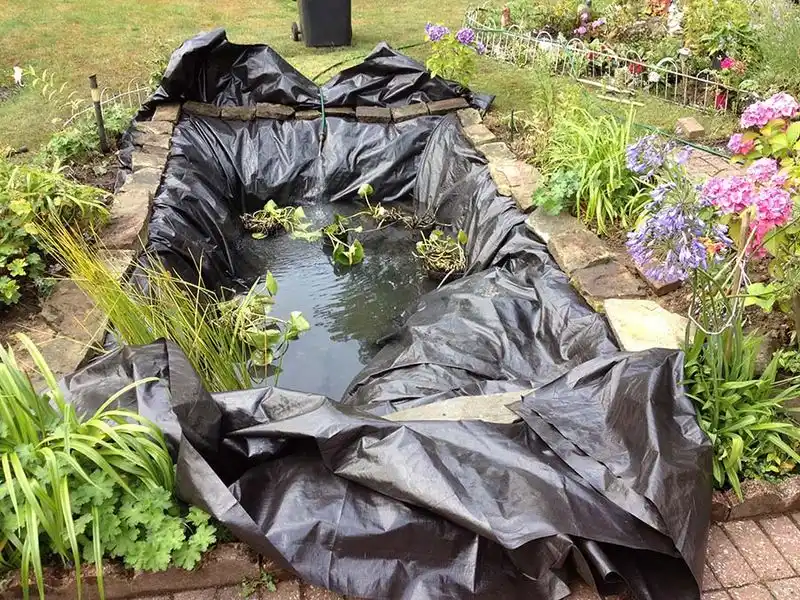
A pond liner is essential for retaining water. Choose a durable, flexible liner that fits your pond’s dimensions. Spread the liner evenly, allowing extra material to overhang for anchoring. Smooth out wrinkles to prevent future leaks. Consider placing a protective underlay beneath the liner to guard against punctures from stones. Once installed, fill the pond partially and adjust the liner, ensuring a snug fit. An effective liner ensures your pond remains a reliable water source for wildlife.
Add Gravel and Stones
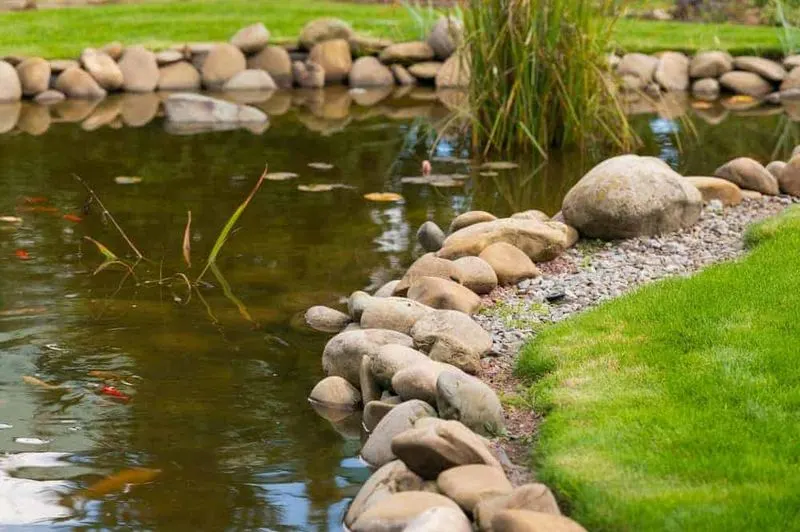
Gravel and stones add texture and stability to your pond’s edges. Lay a layer of gravel on the pond bed to support plant roots and provide habitats for aquatic creatures. Larger stones create basking spots for amphibians and aesthetic appeal. Arrange the stones to mimic natural water landscapes, with varying sizes for visual interest. This rocky edge prevents soil erosion and maintains water clarity. By incorporating gravel and stones, you enhance the pond’s ecological and visual harmony.
Introduce Aquatic Plants
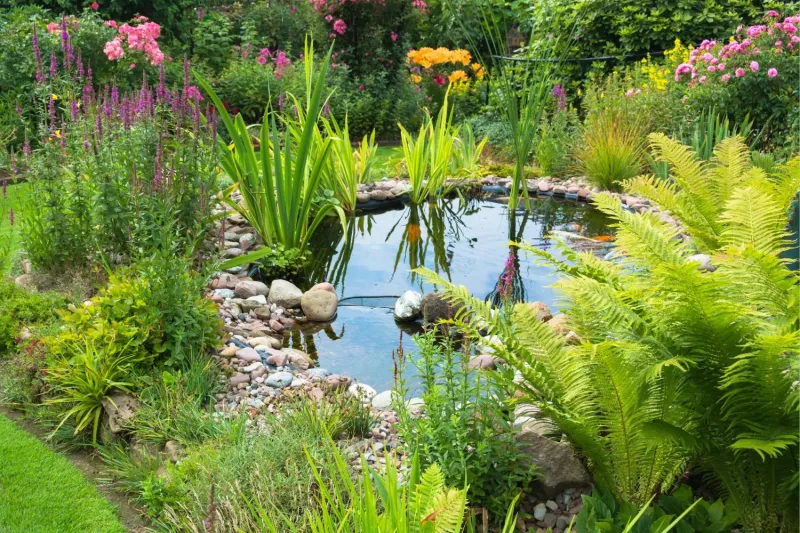
Aquatic plants are the backbone of your pond’s ecosystem. Choose native species like water lilies or marsh marigolds to provide cover and breeding grounds for wildlife. Plant marginal plants on the pond shelves to filter water and offer perches. Submerged plants oxygenate the water and support fish. When placing plants, consider their growth patterns and sun needs. Group them into clusters for a natural appearance. Introducing plants boosts biodiversity and helps balance your pond’s environment.
Create a Gentle Slope
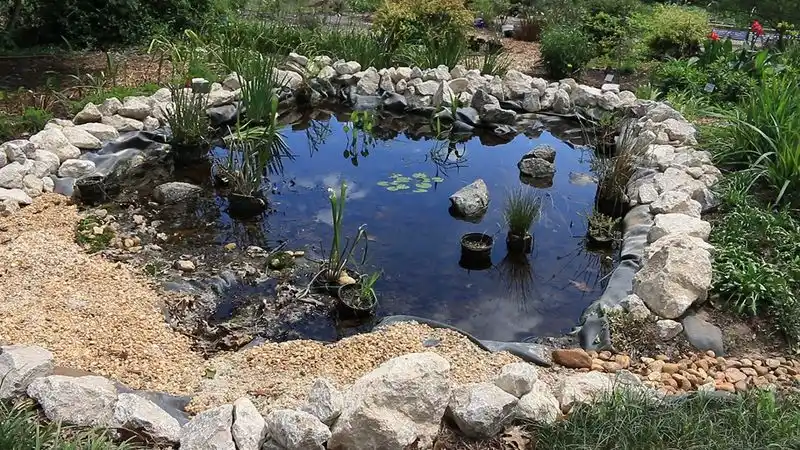
A gentle slope is vital for wildlife access. It allows animals like frogs and hedgehogs to enter and exit the pond safely. Shape the pond’s edges to create a gradual incline, using soil and stones to support the structure. This design prevents accidental drowning and encourages diverse fauna to visit. A slope also aids in water circulation, promoting a healthier pond environment. By crafting this natural transition, you invite a variety of creatures to make your pond their home.
Add a Water Feature
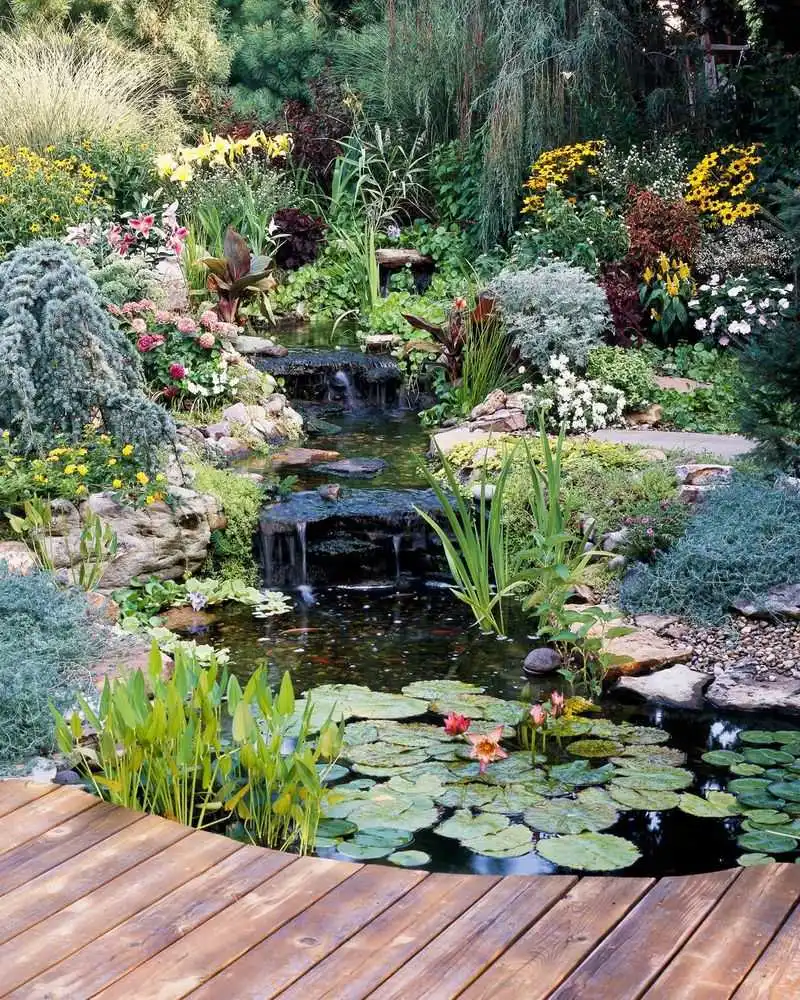
Incorporating a water feature adds movement and oxygenates the pond. A small pump can power a fountain or waterfall, creating a soothing ambiance and reducing algae growth. Position the feature to optimize water flow and prevent stagnation. As water cascades, it attracts birds and other wildlife. Choose a feature that complements your pond’s size and style. This dynamic element enhances the sensory experience, making your pond a lively focal point. Water features transform ponds into vibrant living spaces.
Encourage Wildlife with Shelters
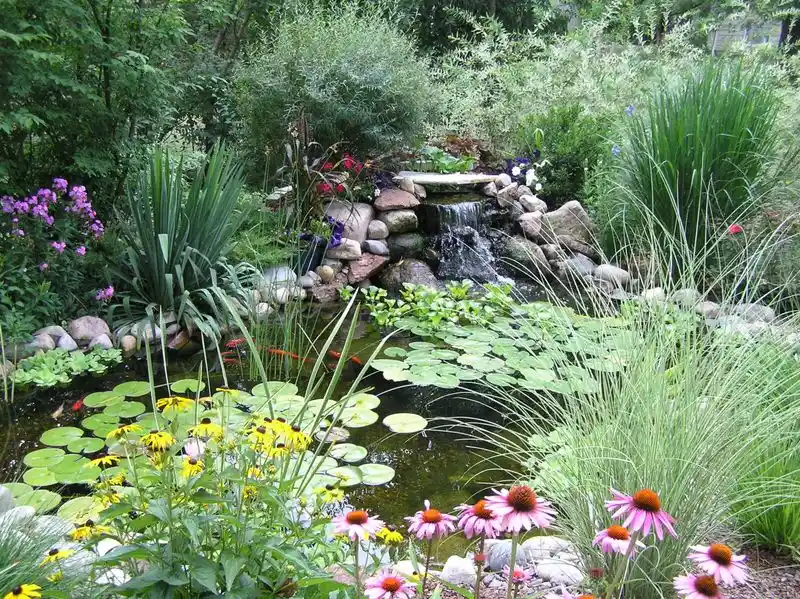
Providing shelters around your pond encourages wildlife to settle. Place logs, rocks, and leaf piles nearby for amphibians and insects. Birdhouses and bat boxes invite avian visitors. Ensure shelters blend naturally with the surroundings. These structures offer protection and breeding sites for various species. By designing your pond area with wildlife accommodations, you create a welcoming refuge. This thoughtful addition transforms your pond into a bustling ecosystem, supporting a rich tapestry of life.
Regular Pond Maintenance
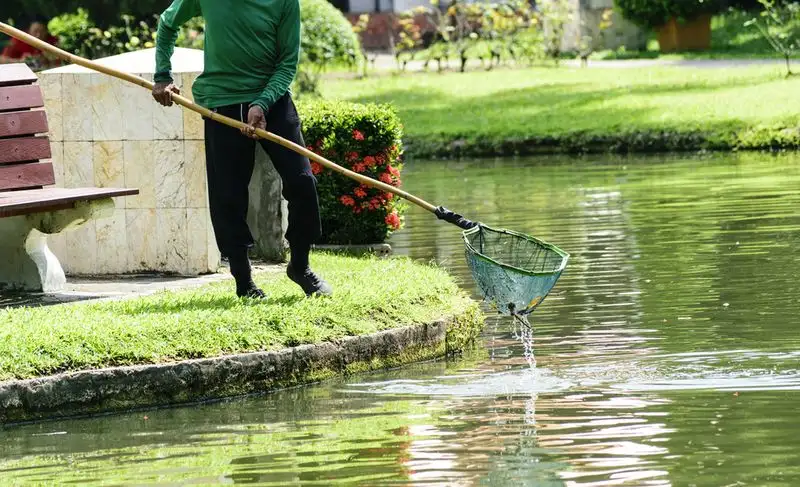
Consistent maintenance keeps your pond thriving. Skim leaves and debris from the surface to maintain water quality. Check for algae blooms and manage plant overgrowth. Inspect the liner for leaks and repair if necessary. Regularly clean filters and pumps to ensure proper water circulation. Monitor water levels and top up when needed. These tasks prevent problems and support a balanced ecosystem. Committing to routine care ensures your pond remains a vibrant sanctuary for life. Consistent maintenance fosters a flourishing oasis.
Use Rainwater for Filling
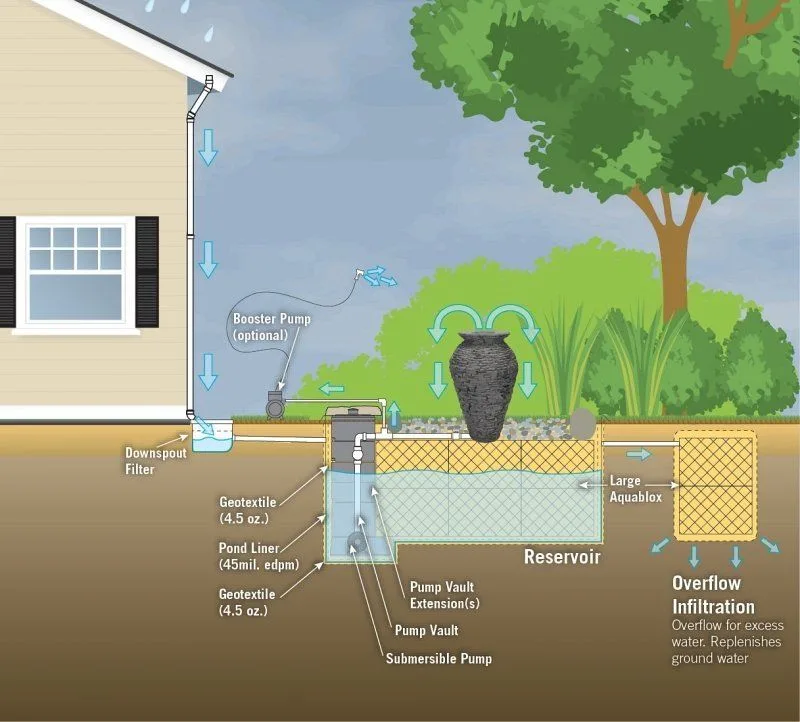
Rainwater is ideal for filling your pond as it’s chemical-free and environmentally friendly. Install a rainwater collection system, directing water from gutters into storage barrels. Use hoses to channel this collected water into your pond. This method conserves resources and supports natural water chemistry. Regularly check your collection system to ensure efficient operation. By using rainwater, you enhance the pond’s health and minimize environmental impact. This sustainable choice benefits both your garden and local wildlife.
Incorporate Fish Wisely
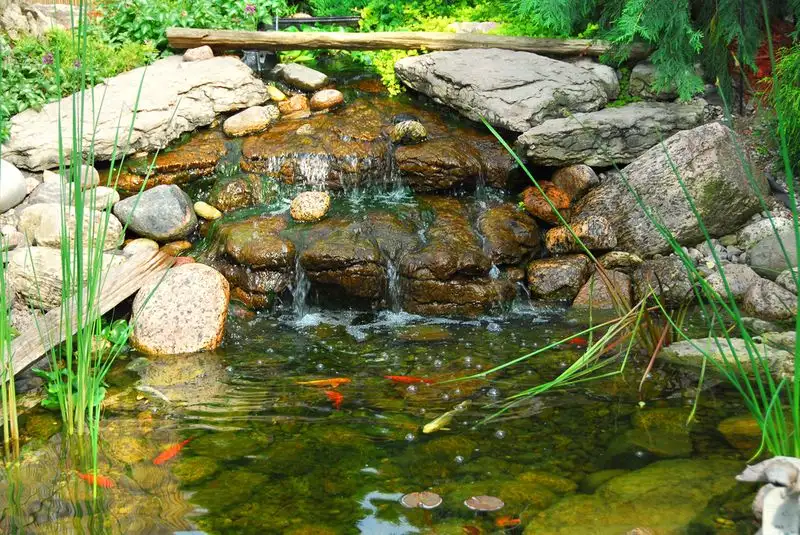
If considering fish, choose species that coexist with your intended wildlife. Small fish like minnows or sticklebacks are suitable, as they control mosquito larvae without dominating the ecosystem. Avoid koi and goldfish, as they can disrupt plant life and attract predators. Introduce fish gradually to monitor their effect on water quality. Balance is key; too many fish can lead to nutrient imbalances. By selecting the right fish, you maintain harmony within your pond’s ecosystem.
Plant Pond-side Vegetation
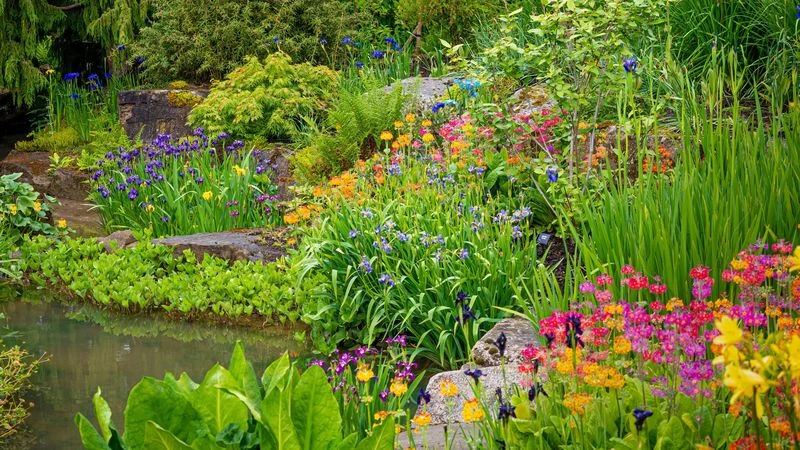
Pond-side vegetation enhances the pond’s appearance and offers wildlife shelter. Choose native plants that thrive in moist conditions, like irises or sedges. These plants stabilize the soil and prevent erosion. Their foliage provides cover for small animals and attracts pollinators. Arrange plants in natural clusters to mimic wild settings. This vegetation softens the pond’s edges and integrates it with the garden. By planting diverse flora, you create a picturesque and ecologically supportive environment.
Educate Yourself on Local Wildlife

Understanding local wildlife enriches your pond experience. Learn about the species that inhabit your area and their specific needs. This knowledge helps you design a pond that supports their presence. Observe the creatures visiting your pond, noting behaviors and interactions. Consider joining local wildlife conservation groups for resources and guidance. Education empowers you to make informed choices, enhancing both the pond’s health and your enjoyment. By fostering this connection, you contribute to local biodiversity.
Add Seasonal Interest
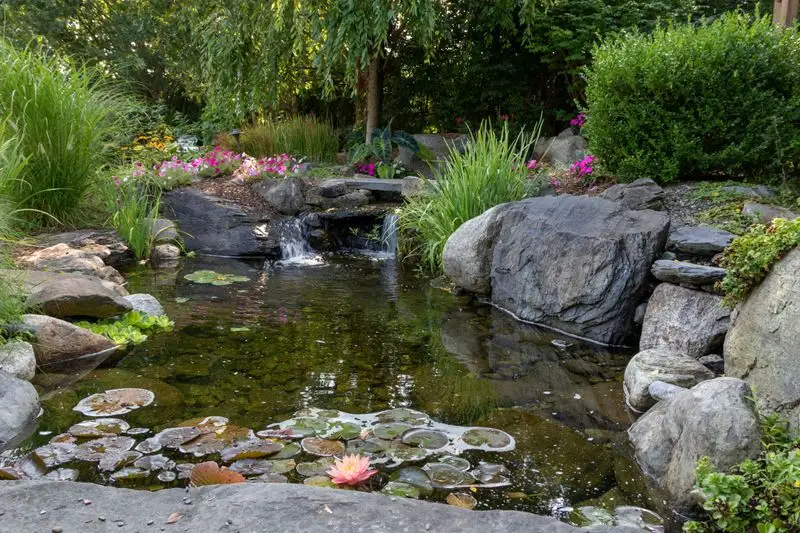
Seasonal changes can enhance your pond’s allure. Introduce plants that bloom at different times, offering year-round beauty. Spring bulbs, summer blooms, and autumn foliage add dynamic color. In winter, frost creates a serene, crystalline landscape. Consider seasonal maintenance adjustments, such as protecting plants and adjusting water levels. These changes keep the pond visually captivating and ecologically balanced through the year. By embracing the seasons, you craft a pond that’s ever-changing and full of wonder.

